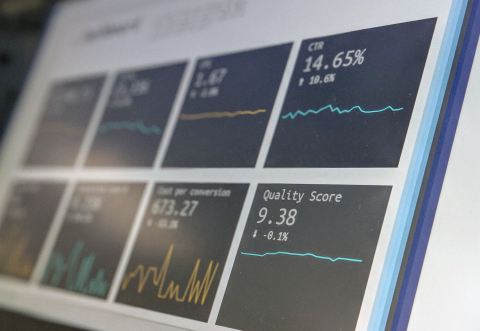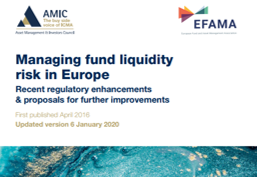EFAMA and its Members appreciate the opportunity to comment on the second FSB/IOSCO consultative document in the context of the current global debate around the alleged “systemic” nature of the asset management industry. EFAMA is the representative association for the European investment management industry. We represent through our 26 national association members, 63 corporate members and 25 associate members about EUR 17 trillion in assets under management, of which EUR 11.3 trillion managed by 55,600 investment funds at end‐December 2014.
Management Companies
EFAMA has been looking at legislative proposals with a direct impact on asset management companies and services, and closely follows any regulatory developments of critical importance to the sector. In addition to issues related to risk management and financial stability, high up on the agenda of EFAMA members is the framework for a prudential regime for Investment Firms (IFD/R), and related implementing measures directly descending from such framework.
EFAMA is focused on minimising the impact of the rules on asset management companies, in particular those holding a limited MiFID license. Key to the sector is the need for proportionality, especially firms that are not authorised to hold client money/securities, or to deal on their own account.
EFAMA Reply to 2nd consultation on NBNI G-SIFIs
Pre-order your copy of the 2021 Fact Book!
EFAMA’s 2021 Fact Book, “Trends in European Investment Funds”, will be published at the end of June.
As in previous years, this year’s Fact Book provides an extensive analysis of key developments in the investment fund industry, inside and outside Europe.
Monthly Statistics February 2021| Demand for long-term UCITS remained strong in February
The European Fund and Asset Management Association (EFAMA) has today published its latest monthly Investment Fund Industry Fact Sheet, which provides data on UCITS and AIFs sold in February 2021, at European level and by country of fund domiciliation.
EFAMA's and ICMA’s AMIC joint response on fund liquidity management by open-ended funds to IOSCO
ICMA’s AMIC and EFAMA have submitted a joint response to the IOSCO consultation on fund liquidity management by open-ended funds.
The response highlights how industry practices and existing regulatory provisions in Europe are well aligned with the Liquidity Risk Management (LRM) recommendations issued by IOSCO in 2018 (Annex 1).
Annual Review June 2019-June 2020
"It gives me great pleasure to provide you with an overview of our activities since our Annual General Meeting in Paris last year. While we were very much looking forward to hosting you all in Brussels this week, the current crisis and associated travel restrictions has forced us to improvise and turn our meeting into a virtual AGM.
Investment Funds Distributor Due Diligence Questionnaire
Funds face unique challenges in performing intermediary oversight, and especially so because of MiFID II requirements, changing regulatory landscapes, and the absence of an industry agreed-upon standard between funds and their distribution channels. To help address these challenges, a dedicated working group developed a uniform due diligence questionnaire (DDQ) that will serve as the standard for investment funds (UCITS and AIFs) in performing onboarding and ongoing oversight of distribution channels.
AMIC EFAMA Report - Managing fund liquidity risk in Europe - 2020
In 2019, AMIC and EFAMA decided to update their 2016 report “Managing Fund Liquidity Risk in Europe” following important policy and regulatory developments at EU and international levels. The purpose of this updated report is to outline the practical liquidity risk management processes which fund management companies put in place when setting up a fund and implement throughout the life of the fund. Also, the report describes the existing European and international regulatory frameworks in the area of fund liquidity risk management.































